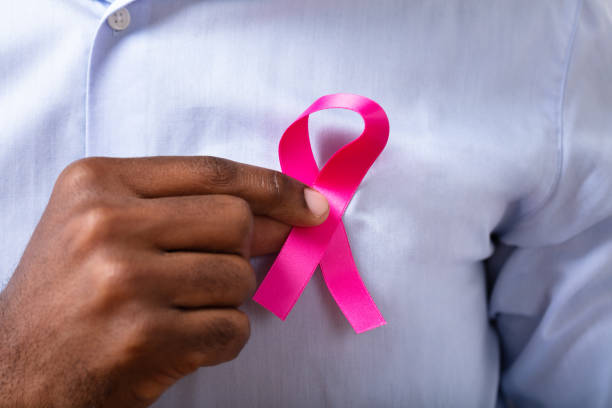by Karen Heslop
While breast cancer is rare in men, it’s far from impossible. According to the American Cancer Society (ACS), 1 in 100 breast cancer diagnoses in the US will be a man. Based on what doctors have seen so far in 2024, the ACS estimates that there will be almost 2,800 new cases of invasive breast cancer diagnosed in men this year and about 530 deaths. One way to decrease the likelihood of the second number is to educate men on what to look for.
How it Affects Black Men
Statistics show that while white men are 100 times less likely to have breast cancer than white women, Black men are only 70 times less likely to have it than Black women. Additionally, Black men have a higher risk of developing all forms of breast cancer than other ethnicities. Given that most men don’t expect to have the condition, it’s common for them to be diagnosed at a late stage. However, Black men have higher death rates even when they have been diagnosed and started treatment.
3 Signs of Breast Cancer in Men
1. A Painless Lump
Different conditions can cause a lump in the breast but they’re typically painful. If you notice a lump in your breast that has no pain, then it’s more likely to be related to cancer.
2. Changes in Your Skin
When cells begin to replicate abnormally, it can affect more than your breast tissue. The skin above your breast can also start to change. You may notice that it’s thicker, darker, and scaly. Your skin might also show signs of dimpling or puckering.
3. Changes in Your Nipple
The abnormal cells can also affect your nipple. If you see it sinking in, turning inward, or changing color, it’s time to see your doctor. Some people also see discharge or bleeding from the nipple.
Common Risk Factors
Everyone is born with some amount of breast tissue. While this doesn’t increase in men, it doesn’t go away either. As with breast cancer in women, men develop the condition when there is abnormal tissue growth. It’s still not clear why the risk for breast cancer is higher in Black men than in other ethnicities but there are a few factors that may contribute. These include having a family history of breast or ovarian cancers, a mutation in the BRCA2 gene, radiation exposure, or chronic illnesses that change hormonal balance such as gynecomastia, liver disease, and Klinefelter syndrome. Being obese and drinking heavily may also contribute to your risk.
How Breast Cancer is Treated
During your diagnosis, it will be integral for your doctor to determine which type of breast cancer you have and the stage. Depending on the results, you have several options for treatment. If there are no signs that the tumors have spread, you may be eligible for surgery to remove the affected breast tissue. In cases where the cancer has spread to the lymph nodes, the doctor can also remove those. After surgery, you may need to undergo radiation therapy to kill any of the abnormal cells that might remain.
For those who have a more invasive form of breast cancer, which has spread to other parts of the body, your doctor might recommend hormone therapy and chemotherapy. Hormone therapy can help slow the growth of cancer cells if you’re dealing with the type of breast cancer that responds to specific hormones. Chemotherapy, on the other hand, isn’t as targeted and will kill abnormal as well as healthy cells. You may still need surgery after these treatments to remove localized growths.
Finally, targeted therapy uses drugs to block specific chemicals in cancer cells. It can be less destructive than chemotherapy but only your doctor can determine if it’s right for you.
Breast cancer might not be common in men but Black men are still at a distinctive risk of developing it. Worse yet, they have a higher risk of dying even if they’ve started treatment. Your best chance of survival is recognizing the symptoms and catching the disease as early as possible.










